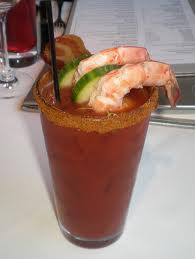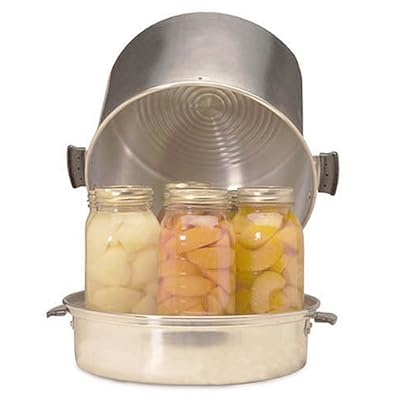Apricots first started production in the US in about 1792. Apricots originated in China and gradually made it to the Mediterranean where they had great success. Spanish explorers introduced it to the new world and it is now a small, but important crop to the state of Washington. Washington State produces roughly 400,000 boxes each year, which pales in comparison to the million of boxes produced in California, but we are known for our quality fruit, brilliant color and large size. Washington apricots are shipped throughout Northern America and to a few other countries as well.
Washington Apricots are a great seasonal fruit and are delicious for cooking and eating fresh out of hand. The Washington apricot season extends from late June to early August.
Apricot Nutrition
Beta-Carotene
Beta-carotene, a member of the anti-oxidant family, is believed to play a critical role in fighting disease. Apricots are a premium source of beta-carotene with just three fresh apricots containing about 30 percent of the recommended daily amount.
Vitamin A
The beta-carotene in apricots is converted to Vitamin A in the body. This nutrient helps protect the eyes and keep the skin, hair, gums and various glands healthy. It also helps build bones and teeth. Plus, research shows that Vitamin A helps to fight infection by maintaining strong immunity. For this reason, researchers are looking to apricots as a valuable source of beta-carotene’s healing power. Note: beta-carotene is often called Vitamin A on food labels.
A Strong Anti-Oxidant Team
The unique mix of compounds found in apricots also makes this fruit a good choice for helping to fight heart disease. Along with beta-carotene, apricots contain the other powerful anti-oxidants, Vitamin C and lycopene. Combined, these compounds help protect against cancer, heart disease and stroke.
Getting Five-A-Day
Eating five servings of fruit and vegetables each day plays an important role in healthy living. The compounds found in food work together to provide the best benefit for your body. As such, apricots are a solid choice for keeping healthy and adding variety to the five-a-day quota.
Shopping & Storing Tips
• Look for plump, fairly firm fruit with an orange-yellow to orange color.
• Fully ripe fruit is soft to the touch, juicy and should be eaten as soon as possible.
• Keep apricots cool to prevent over ripening. Store ripe apricots in the refrigerator where they may keep for up to a week.
• Place hard apricots in a paper bag and let ripen for a day or two.
• To freeze fresh apricots, simply half the fruit and place on baking sheet until frozen. Then pack in a plastic freezer bag.
• Avoid green fruit which will not ripen.
Canning Apricots
An average of 16 pounds is needed per canner load of 7 quarts; an average of 10 pounds is needed per canner load of 9 pints. A bushel weighs 50 pounds and yields 20 to 25 quarts-an average of 2¼ pounds per quart.
Select firm fruit slightly greener than would be ideal for eating fresh.
Wash fruit well. Cut prepared apricots in half, remove pits and slice if desired. To prevent darkening, keep peeled fruit in ascorbic acid solution. Prepare and boil a very light, light, or medium syrup or pack apricots in water, apple juice, or white grape juice.
Raw packs make poor quality apricots.
Hot pack – In a large saucepan place drained fruit in syrup, water, or juice and bring to boil. Fill jars with hot fruit and cooking liquid, leaving ½-inch headspace. Place halves in layers, cut side down. Process in a boiling water bath for 10 minutes. Shut off heat and let the pot rest for 5 minutes. Then, remove jars to cool.
Silky Apricot Butter
4 lbs apricots, peeled, halved and pitted
1 cup water
3 cups granulated sugar
4 tablespoons lemon juice
- In a crockpot, combine apricots and water. Start with lid in place. Turn on high until mixture comes to a boil.. Prop up the lid on wooden spoons or chopstick to allow steam to escape, stirring occasionally, until apricots are soft and reduced, about 3-4 hours.
- Working in batches, transfer apricot mixture to a food mill or food processor fitted with a metal blade and puree just until a uniform texture is achieved. Do not liquify. Measure 12 cups of apricot puree.
- In the crock pot, combine apricot puree and sugar. Stir until sugar dissolves. Bring to a boil on high and cook until mixture thickens and holds its shape on a spoon.
- Ladle hot butter into hot jars, leaving 1/4 inch headspace. Remove air bubbles, wipe rim and place lids.
- Process for in a Boiling Water Bath for 10 minutes. Turn heat off. Wait 5 minutes then remove jars, cool and store.
Mascat Apricot Dessert Topping
Use as a topping for pound cake, ice cream, frozen yogurt, etc.
1 1/2 pounds sliced fresh apricots
1/2 apricot nectar or orange juice
1 cup Muscat dessert wine
1 cup granulated sugar, mixed with
3 tablespoons ClearJel
Mix apricots and juice together and bring to a boil. Cook at a low simmer until apricots are soft. Add sugar+ClearJel and Muscat. Mix well and simmer for 1-2 minutes until thickened.
Pour into half-pint sized canning jars. Apply lids and process in a Boiling Water Bath for 15 minutes.
Makes 4-5 half-pints
Apricot Nectar
1 quart apricots
1/2 cup sugar
1 quart water
1 Tbsp. lemon juice
Wash and pit fresh fruit. Boil fruit and water 5 minutes. Strain. Add sugar and lemon juice and bring to a boil. Pour into pint canning jars, apply lids and process in a Boiling Water Bath for 15 minutes.
Makes 3 pints.
Pickled Apricots
A nice side dish for meat and poultry
7 lbs apricots(unpeeled, whole)
6 cinnamon sticks
4 cups sugar(may be all or part brown sugar)
whole cloves
1 tablespoon brandy per jar(optional)
2 cups vinegar
Wash apricots and stick 2-3 cloves into each one. Boil cinnamon sticks and vinegar together. Put apricots into syrup and boil gently for 5 minutes. Pack into sterilized hot jars with one cinnamon stick in each jar and 1 tablespoon of brandy if desired. Pour in hot brine leaving 1/2 inch of headspace. Apply lids and process in a Boiling Water Bath for 10 minutes.
Apricot Jam with Grand Marnier
• 2.2 pounds apricots, pitted and halved• 3 cups sugar
• juice of one lemon
• 1 cup honey
• 2 ounces(1/4 cup) Grand Marnier Liquor
Sterilize 6 half-pint jars and keep hot until ready to fill.
1. Place prepared fruit in a bowl, add lemon juice, honey and sugar. Cover and macerate for several hours in the refrigerator.
2. Transfer mixture to a heavy pot and slowly bring to a full boil.
3. Lower heat to a controlled boil, skim and continue to cook, stirring occasionally until mixture begins to reduce and thicken, and the apricot halves begin to break down.
4. When the jam has reduced almost to the jell point, add the wine. Cook a few minutes longer until ready.
5. Ladle into jars and seal. Process in boiling water for 5 minutes.
Apricot Relish
- 2 pounds apricots
- 2 cups onion, diced
- 1 teaspoon salt
- 5 cloves
- 1 teaspoon cayenne pepper
- 2 cups vinegar, white
- 1 cup honey
- 1 cup sugar
- teaspoons tumeric
- 1 teaspoon curry powder
- 2 teaspoons ClearJel
- Wash apricots and remove stones.
- Place all ingredients except flour in a pot, bring to the boil, stirring,reduce heat and simmer 45 minutes. Stir occasionally.
- Blend ClearJel with a little water and stir into mixture. Bring back to the boil and simmer 5 more minutes.
- Ladle into hot jars and apply lids and Process in a Boiling Water Bath for 10 minutes.
If you would like to learn more about Home Canning, join me for a canning class!








